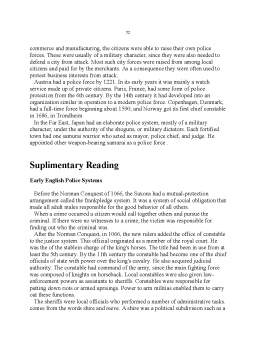Extras din curs
Cursul numărul 1
Family (sociology), basic social group united through bonds of kinship or marriage, present in all societies. Ideally, the family provides its members with protection, companionship, security, and socialization. The structure of the family, and the needs that the family fulfils vary from society to society. The nuclear family—two adults and their children—is the main unit in some societies. In others, the nuclear family is a subordinate part of an extended family, which also consists of grandparents and other relatives. A third family unit is the single-parent family, in which children live with an unmarried, divorced, or widowed mother or father.
History
Many social scientists assert that the modern Western family developed largely from that of the ancient Hebrews, whose families were patriarchal (male-governing) in structure. The family resulting from the Greco-Roman culture was also patriarchal and bound by strict religious precepts. In later centuries, as the Greek and then the Roman civilizations declined, so did their well-ordered family life.
With the advent of Christianity, marriage and child-bearing became central concerns in religious teaching. The purely religious nature of family ties was partly abandoned in favour of civil bonds after the Reformation, which began in about the 1500s. Most Western nations now recognize the family relationship as primarily a civil matter.
The Modern Family
The modern family differs from earlier traditional forms, however, in its functions, composition, and life cycle, and in the roles of mothers and fathers.
The only function of the family that continues to survive all change is the provision of affection and emotional support by and to all its members, particularly infants and young children. Specialized institutions now perform many of the other functions that were once performed by the agrarian (rural) family.
Education is provided by the state or by private groups. Religious training and recreational activities are available outside the home, although both still have a place in family life. The family is still responsible for the socialization of children, but even in this capacity, the influence of peers and of the mass media has assumed a larger role.
Family composition in industrial societies has changed dramatically since the onset of the Industrial Revolution. The average number of children born to a woman in the United States, for example, fell from 7.0 in 1800 to 2.0 by the early 1990s.
Some of these developments are related to ongoing changes in women's roles. In Western societies, women in all stages of family life have joined (or re-joined after having children) the labour force. Rising expectations of personal gratification through marriage and family, together with easier divorce and increasing employment opportunities for women, have contributed to a rise in the divorce rate in the West. In 1986, for instance, there was approximately one divorce for every two marriages in the United States. In Great Britain the rate is approximately one for every three marriages.
By the 1970s, the prototypical nuclear family had yielded somewhat to modified structures including the one-parent family, the stepfamily, and the family without children. One-parent families in the past were usually the result of the death of a partner or a spouse. Now, however, most one-parent families are the result of divorce, although some are created when unmarried mothers bear children. In 1991 more than one out of four children lived with only one parent, usually the mother. Many one-parent families, however, eventually became two-parent families through remarriage or cohabitation.
A stepfamily is created by a new marriage of a single parent. It may consist of a parent and children and a childless spouse, a parent and children and a spouse whose children live elsewhere, or two joined one-parent families. In a stepfamily, problems in relations between nonbiological parents and children may generate tension; the difficulties can be especially great in the marriage of single parents when the children of both parents live together as siblings.
Preview document
Conținut arhivă zip
- Cursul de Limba Engleza.doc























































































